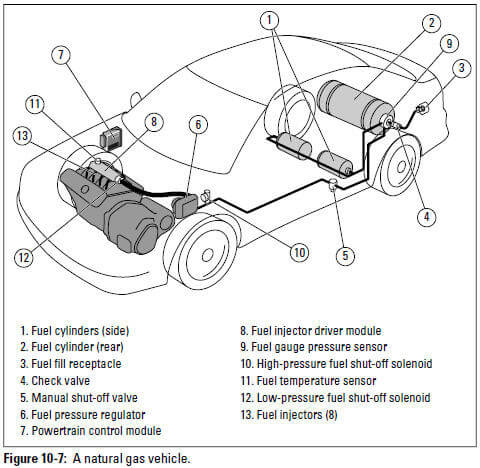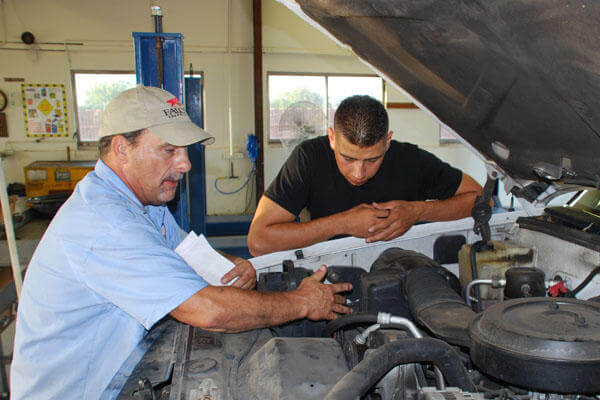Natural gas vehicles (NGV) use compressed natural gas (CNG) rather than liquid natural gas (LNG) such as butane and propane. Because CNG burns cleanly with few emissions, NGVs are popular outside the United States. NGVs haven't been as popular in the U.S. because natural gas isn't as available as gasoline at filling stations, although it is a common fuel for shuttles, buses, and fleets that must meet government clean-air requirements.
The biggest differences between gasoline vehicles and NGVs are as follows (see Figure 10-7): Because CNG is compressed, it requires fuel tanks that can withstand such pressure. (The fuel is measured in units called gasoline-gallon equivalents, or GGE.) Fuel lines on NGVs also have to be high-pressure lines, and the fuel injection delivery system has to be specially made for CNG. But after the gas is mixed with air and injected into the engine's combustion chamber, the engine works the same as a gasoline ICE. A significant difference occurs at the tailpipe, however. CNG produces far fewer pollutants than either gasoline or diesel, which means that most NGVs meet low- to ultra-lowemission standards.
You can find stations that sell CNG in your area at gasprices.mapquest.com. Simply select CNG from the drop-down menu under the heading Find Gas Prices.
 |
From Auto Repair for Dummies, copyright © 2009 by Wiley Publishing, Inc., Indianapolis, Indiana. Used by arrangement with John Wiley & Sons, Inc.










